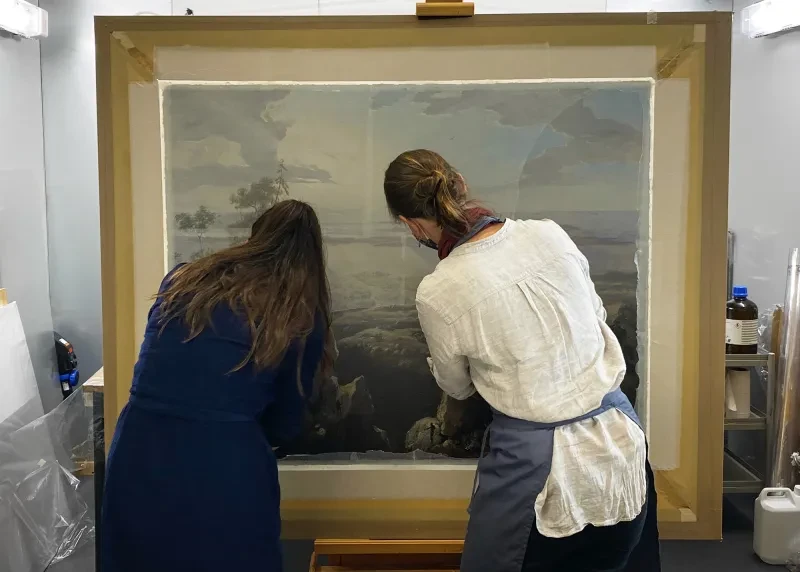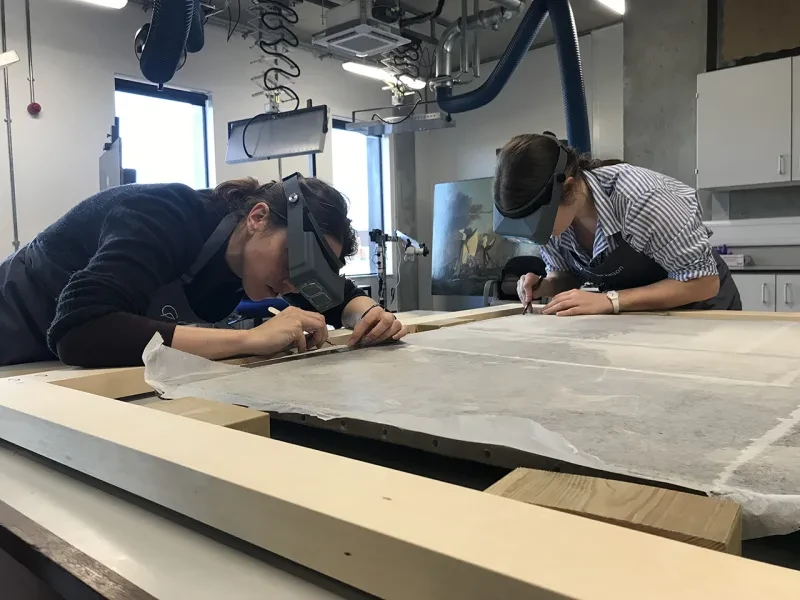
What is lining?
Lining is the technique of attaching a new fabric support to the back of a canvas painting.
The process can help to safely support the painting if the original canvas has been severely damaged or grown brittle with age.
However, lining is a major treatment, which should only be carried out when absolutely necessary. The 1974 Greenwich Lining Conference sought to broker an international agreement on how and when to carry out the process.
The history of lining
Paintings conservation is a broad field, and lining paintings is a specialist skill that not every conservator would feel confident to attempt. Conservators may be trained in the aims, ethics and aesthetics of lining but might practise lining relatively rarely. A lining executed with a poor understanding of the materials can have disastrous consequences for the condition of a painting.
Historically, most linings took place in smaller, specialist workshops where practical skills were passed down across generations from a liner to their apprentice. It is important that we do not lose sight of the specialized knowledge which lining workshops foster, and instead aim to keep these practical skills in lining alive.
The Westall Lining Project aimed to share practical skills and specialist knowledge with the wider conservation community.
Lining in action
In 2021, Royal Museums Greenwich hosted a series of lining masterclasses at the Prince Philip Maritime Collections Centre and The Courtauld.
A painting from Royal Museums Greenwich's collection, View of Cape Townshend taken from Mount Westall, March 1802 by William Westall (1781-1850), was chosen to be part of the project.
The work is part of a larger series, and skills gained during its treatment could be used to inform future treatment on the other paintings in this series.
View of Cape Townshend had been lined in the past and, when examined by paintings conservator Sarah Maisey along with other conservators, it was found that this old lining was in very poor condition.
The painting had also been strip-lined as a short-term measure to avoid re-doing the lining, meaning that long strips of canvas had been added to the edges of the painting where it was attached to the stretcher. The strip-lining was now starting to bulge and ripple as it aged.
Since no alternative treatment could be found, we could not delay addressing the old linings any longer. Both the old strip-lining and lining had to be carefully removed so a new lining could be carried out, thus ensuring the long-term structural stability of the painting.
Follow the stages of the project below to learn more about how paintings are lined today.
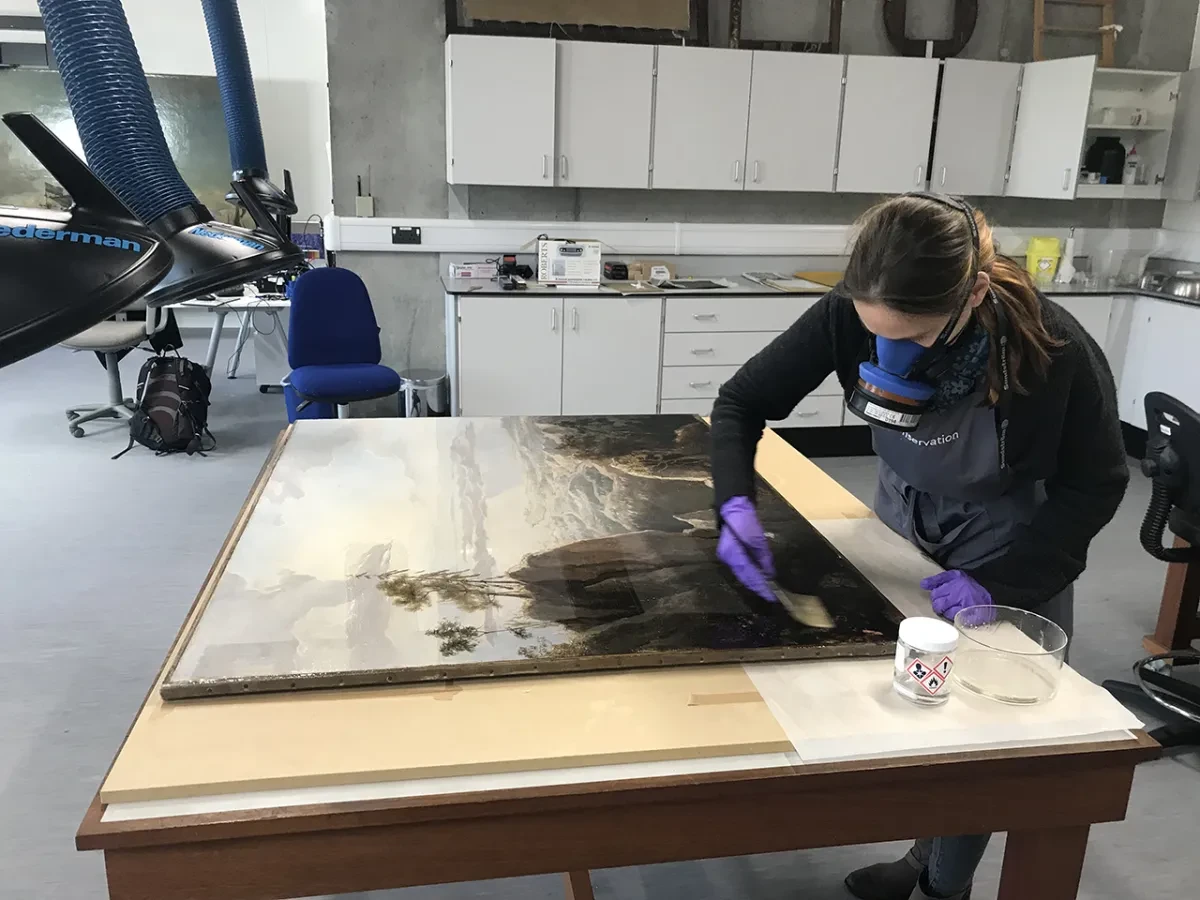
The process begins
Paintings Conservator Sarah Maisey brushes a preliminary varnish onto the Westall painting before the lining process begins.
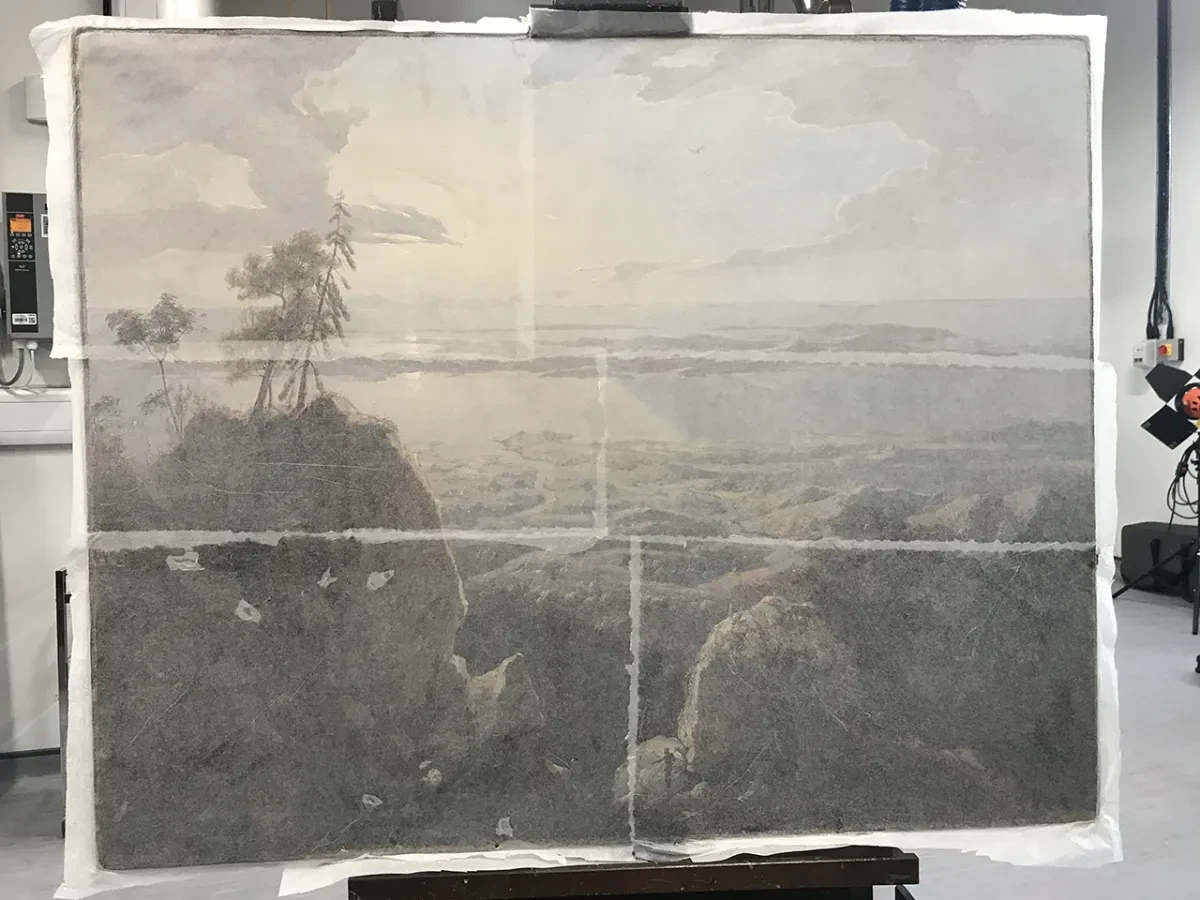
Protecting the painting
A temporary tissue 'facing' is applied to the front of the painting. This is done to protect the surface of the painting during the lining process.
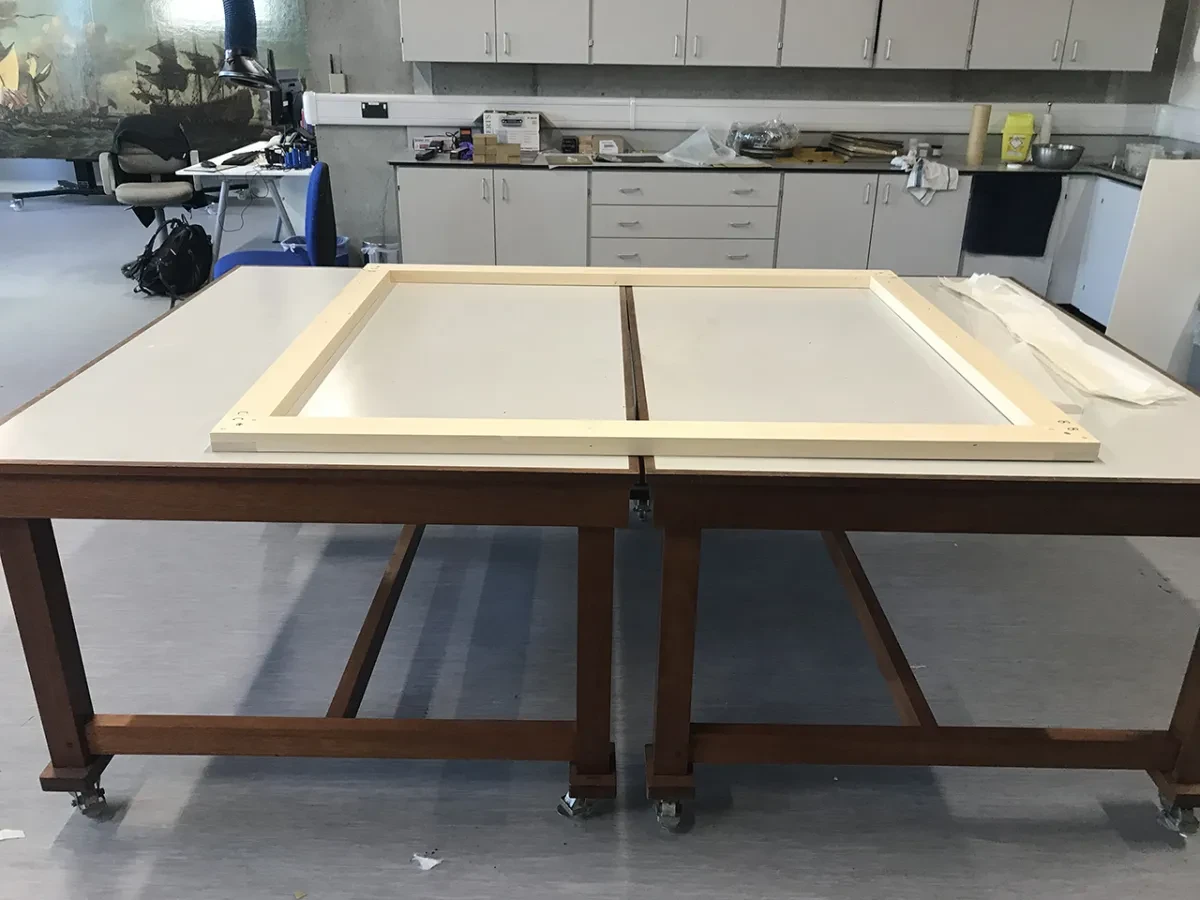
Preparing the handling frame
An empty handling frame rests on a table ready for the Westall painting. This frame will hold the painting in place throughout the process, and allow conservators to check both the front and the back of the work.
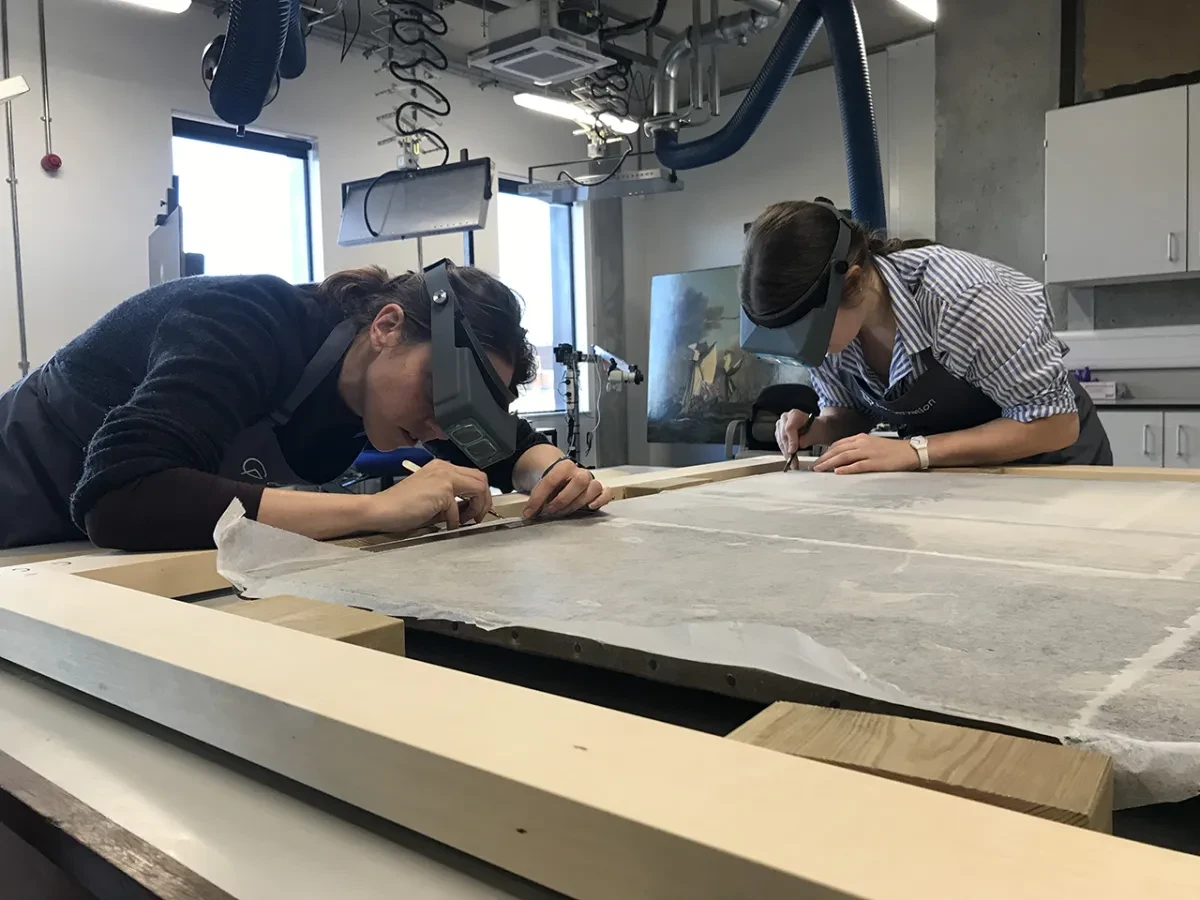
Removing the old wooden support
Sarah Maisey carefully cuts the old lining canvas away from the old stretcher.
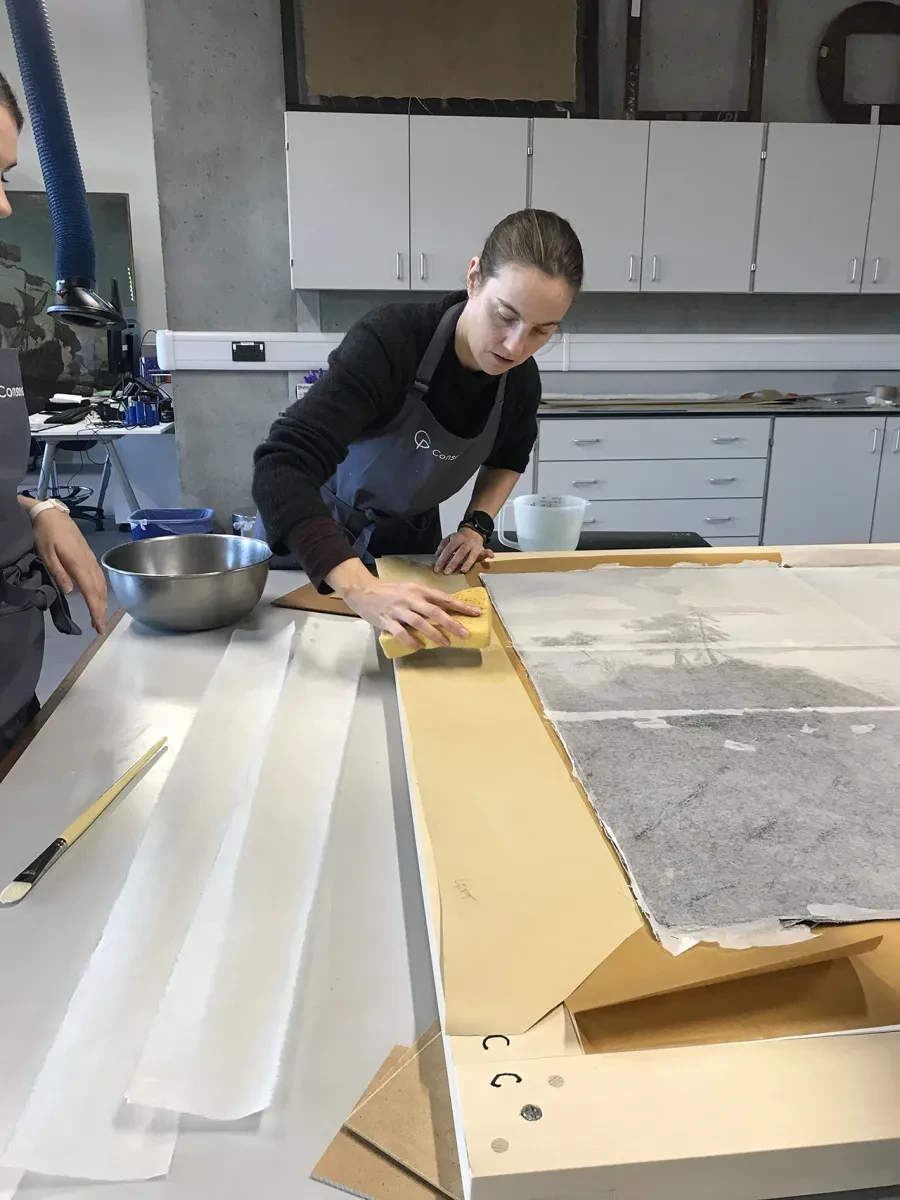
Cutting to size
Strips of kraft paper are prepared to attach the Westall onto the handling frame.
The paper is kept wet throughout the process so that the whole system will dry evenly once complete.
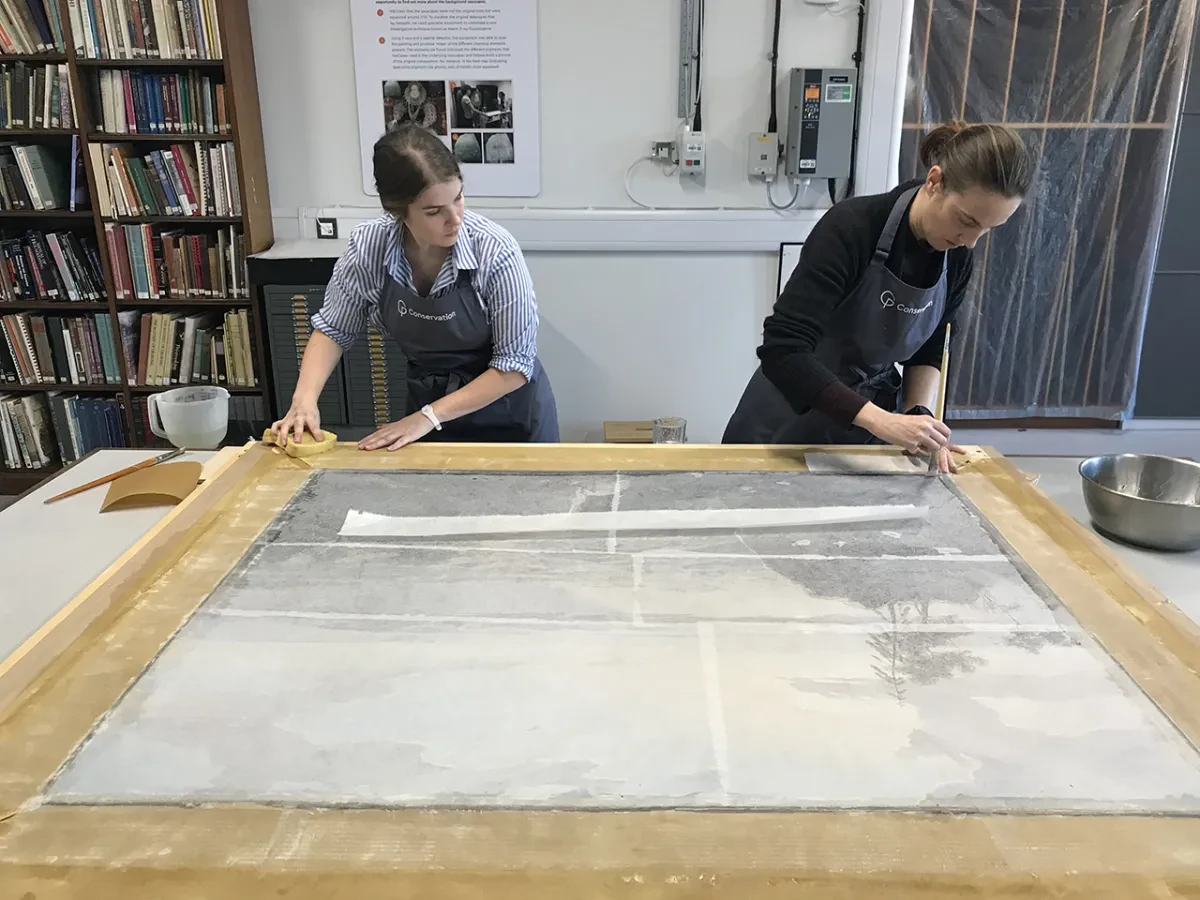
Attaching the painting
The painting is secured to the handling frame by attaching strips of tissue paper to the edges of the faced painting and the kraft paper below.
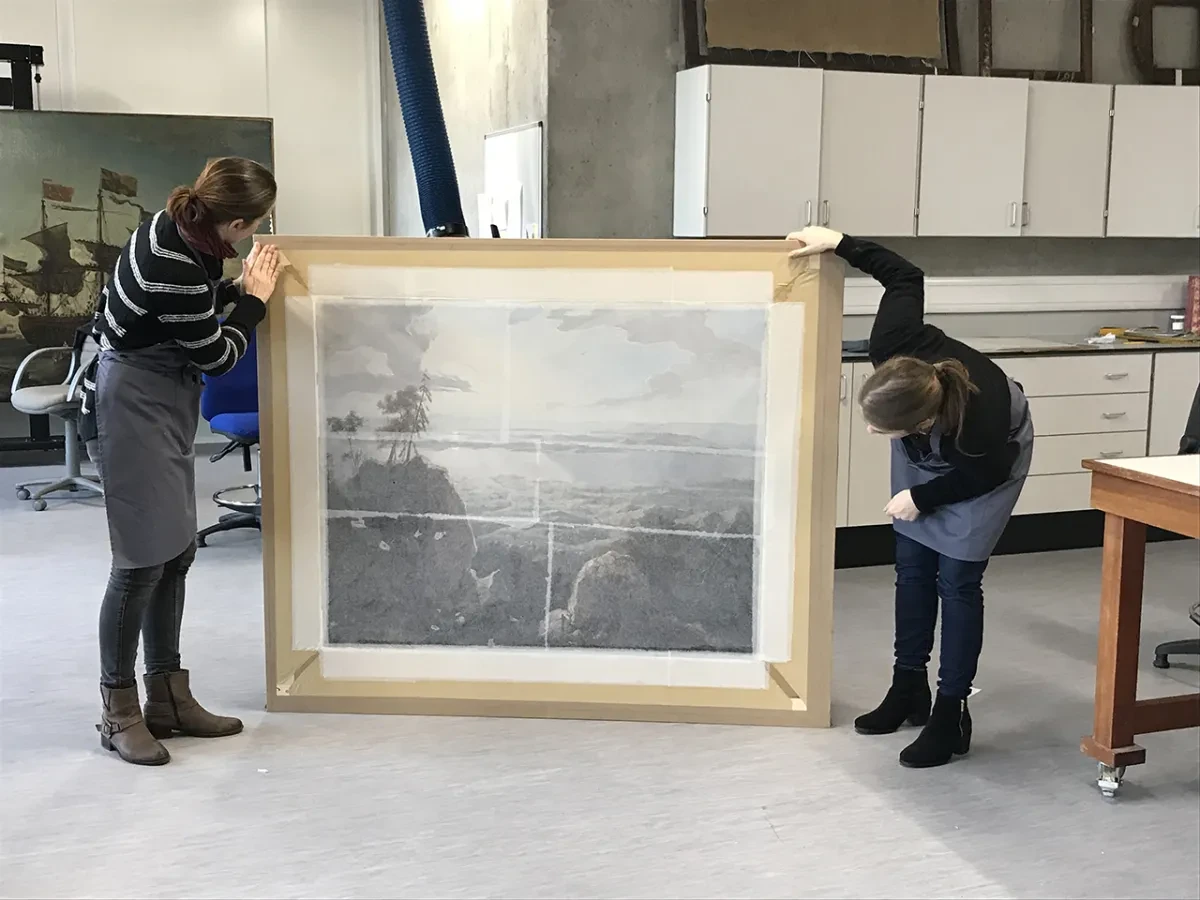
Checking the results
Conservators are able to examine their work once the painting is attached to the handling frame.
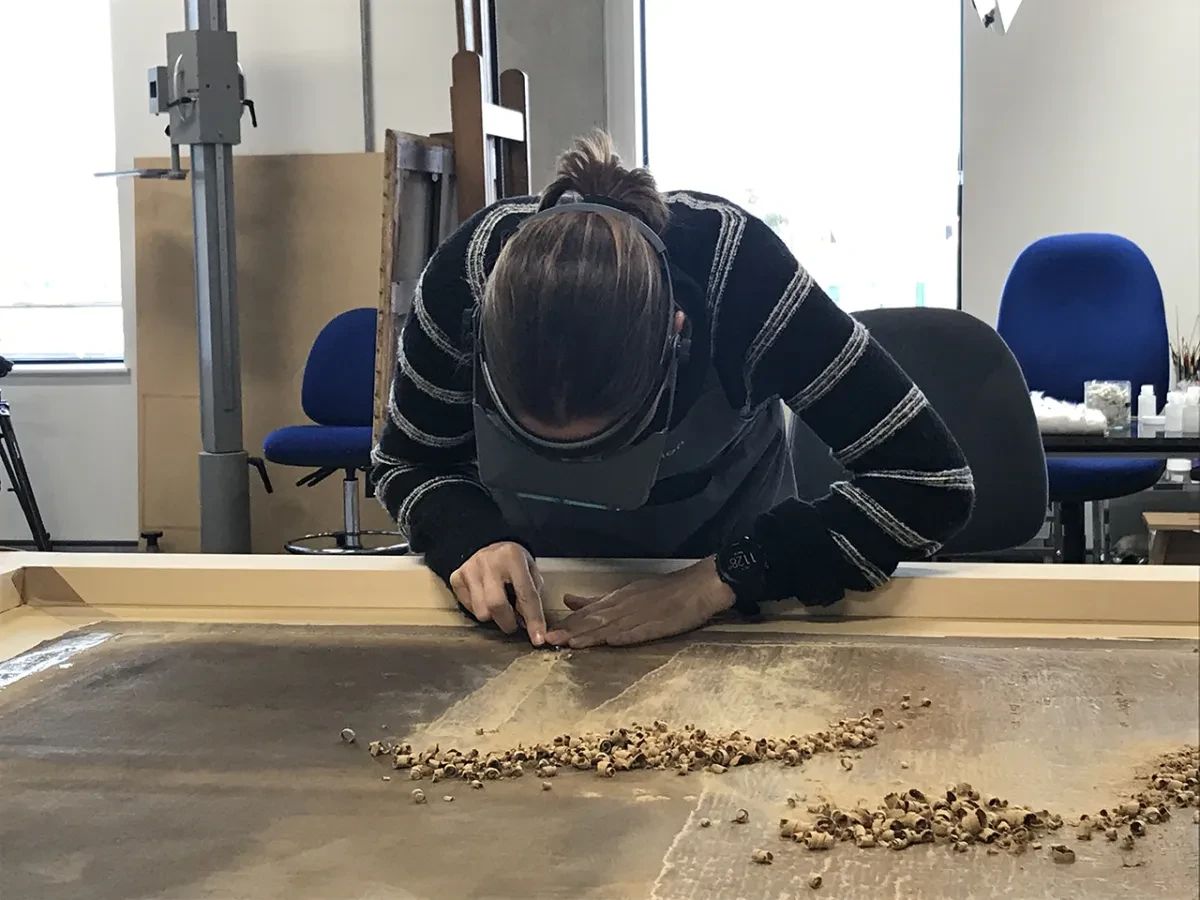
Removing the old lining
Conservators turn to the task of removing the old lining.
Now that the back of the canvas can be easily accessed, the strip-lining is removed from the edges of the painting. This was identified as being part of a previous short-term repair. Next the old lining canvas is carefully removed from the back of the painting.
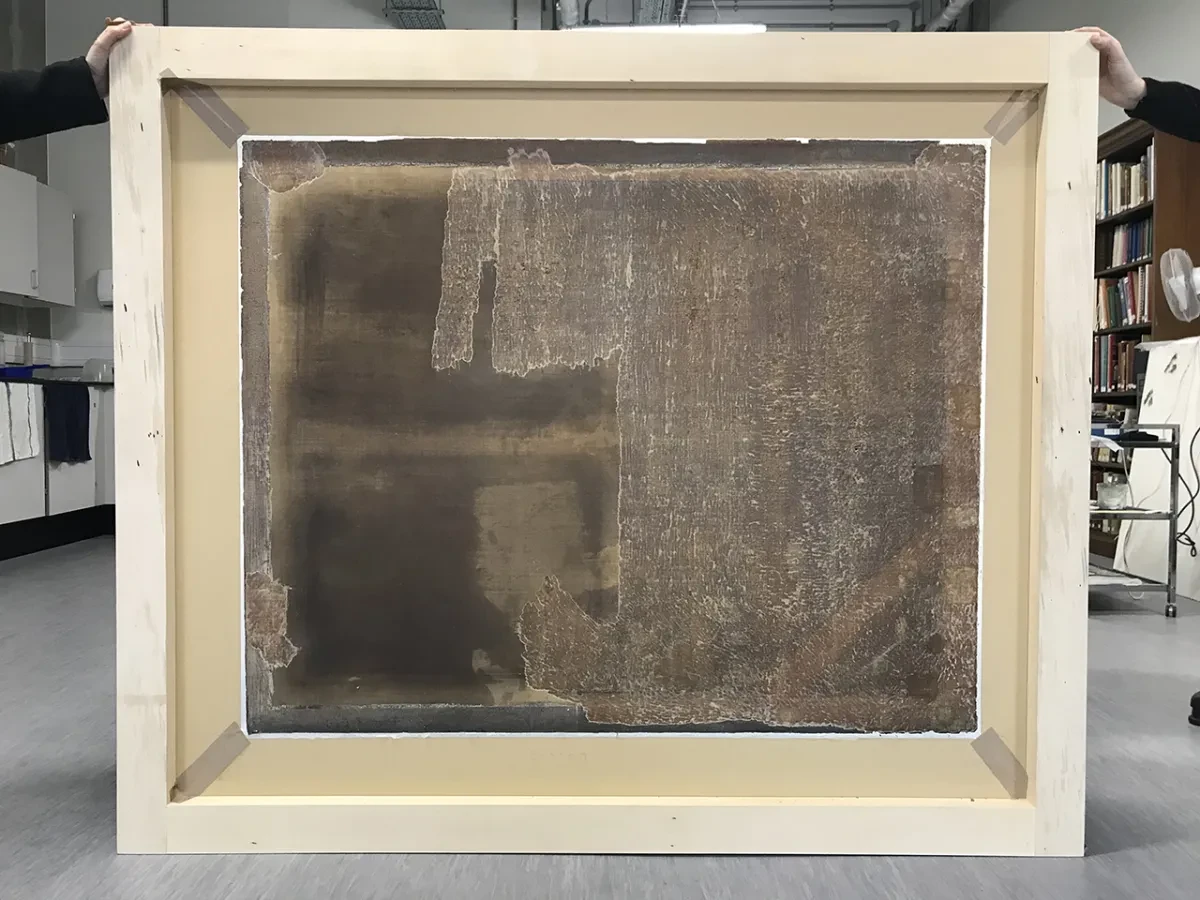
Seeing the changes
This is the back of the painting half-way through the de-lining process. You can see the lighter areas where the lining has already been removed.
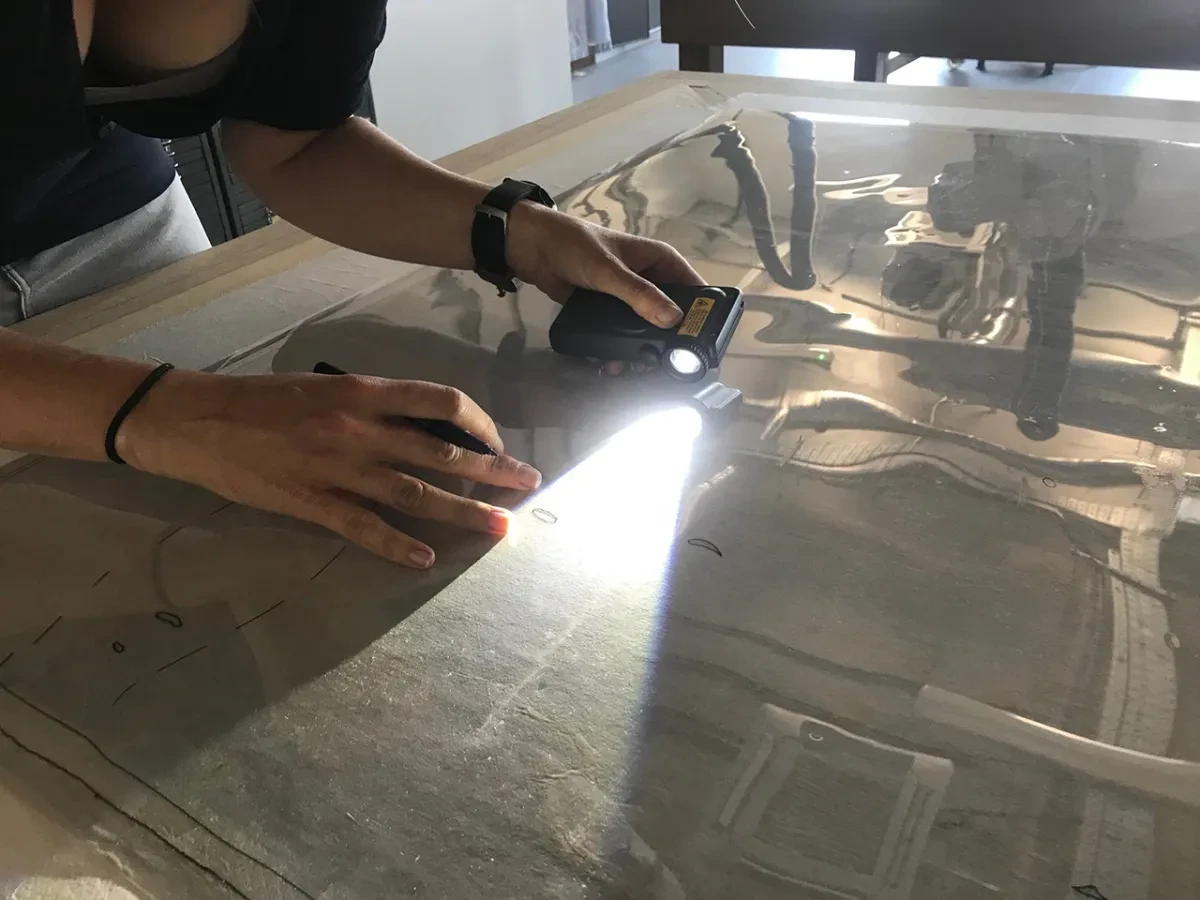
Tracing and filling
A tracing is made of indented areas in the painting’s surface which require filling. This allows these indented areas to be located on the reverse of the painting.
The indented areas are then filled from the reverse of the painting.

Removing the facing
Once the de-lining is complete, the temporary tissue facing protecting the painting's surface can safely be removed.
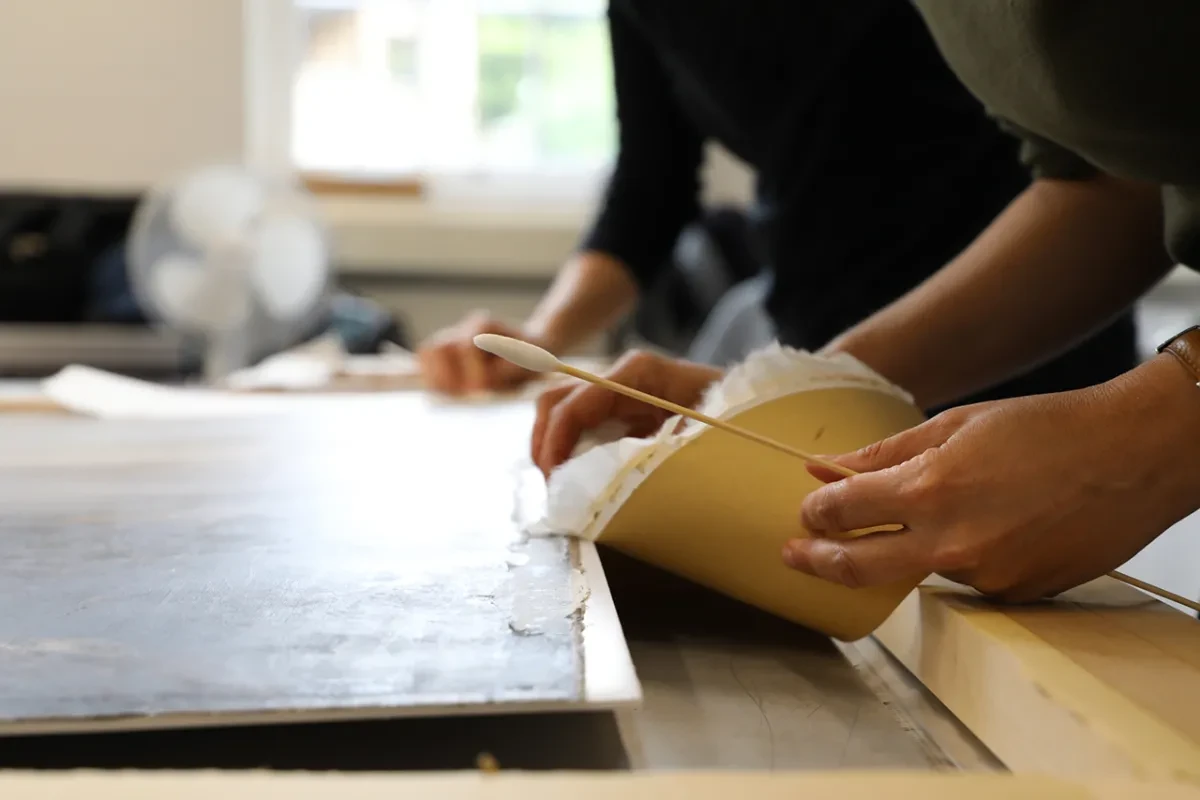
Removing the handling frame
The painting can now be detached from the handling frame. The tissue and kraft paper that connected the frame to the edges of the painting are carefully removed.
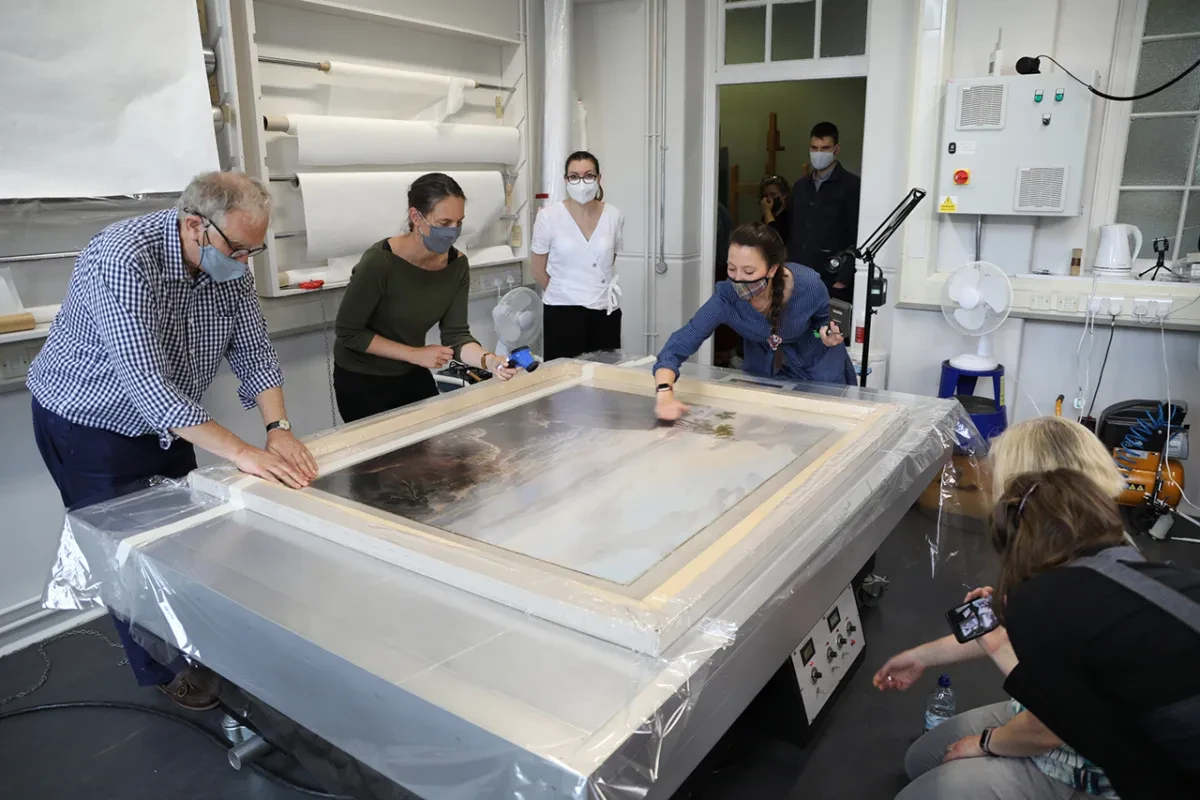
The vacuum table
The painting is placed on a vacuum table, with the new lining canvas beneath. Heat and pressure from the table help to attach the painting to its new lining canvas.
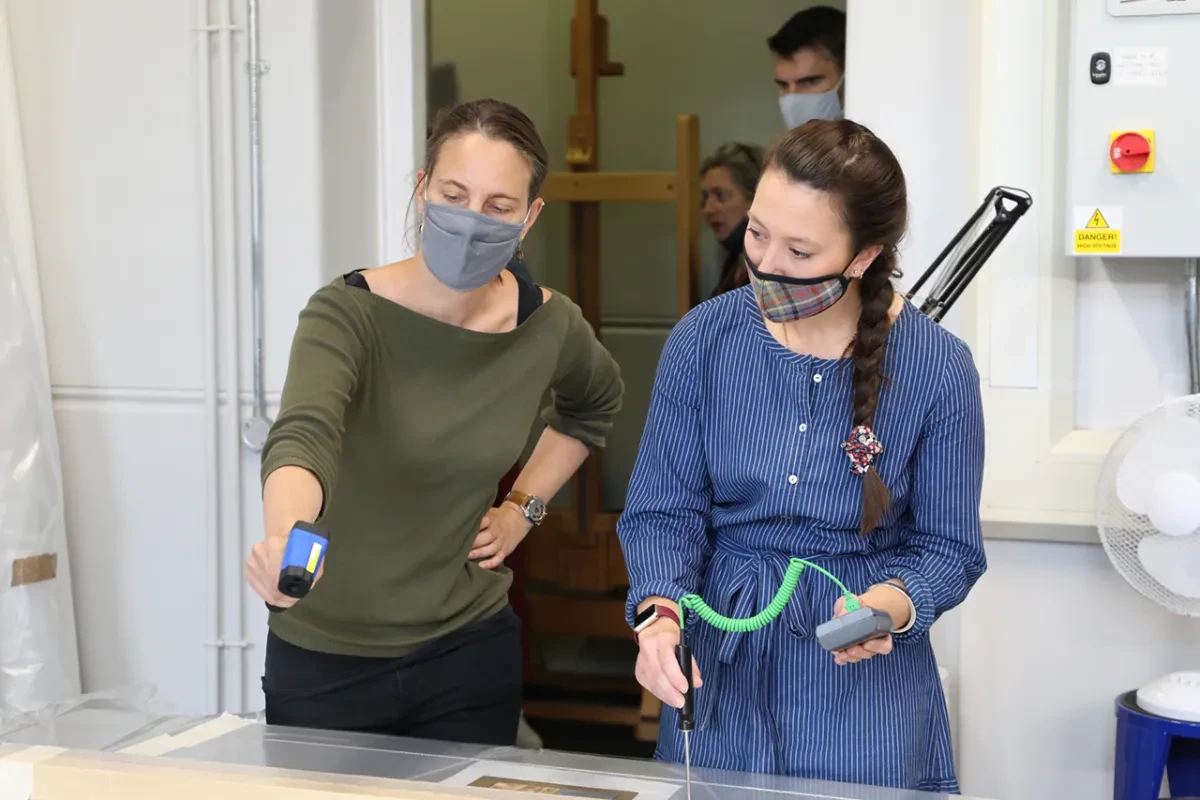
Checking the temperature
Throughout this lining process, conservators will monitor the temperature of the painting's surface.
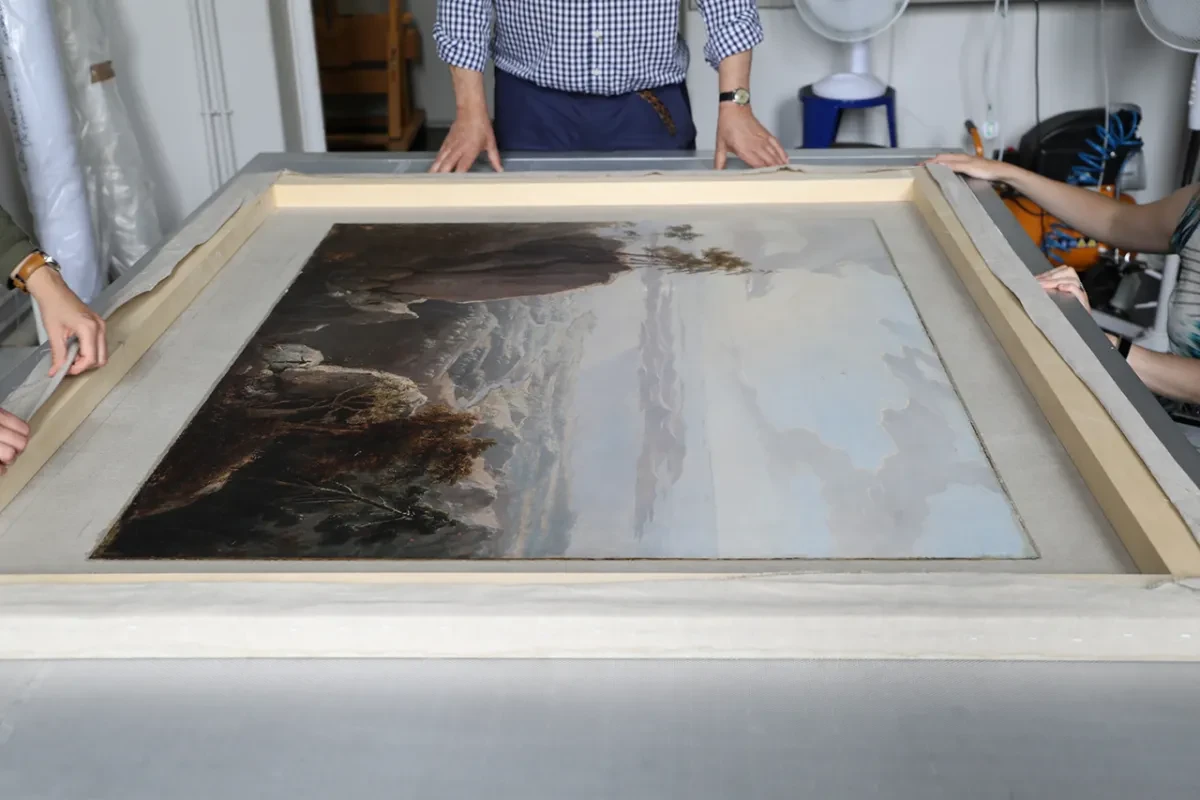
Work is complete
This is the painting complete with its new lining. The new fabric support should ensure the long-term structural stability of the painting.
Our partners
The Westall Lining Project is a collaboration between Royal Museums Greenwich and The Courtauld, with generous support from the Getty Foundation through its Conserving Canvas initiative.


